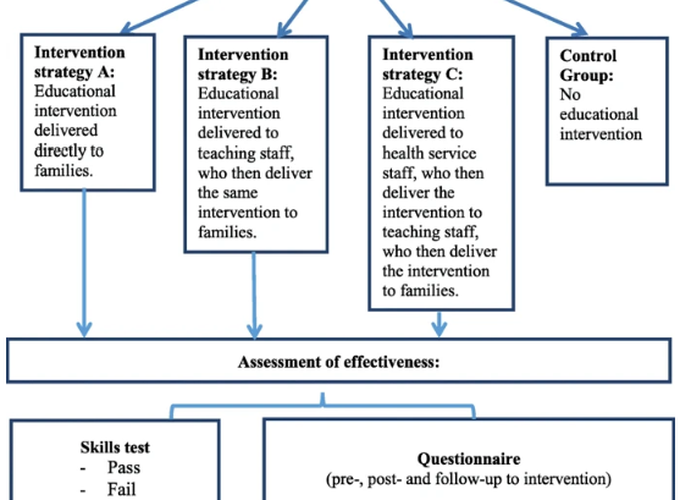Increasing awareness of food-choking and nutrition in children through education of caregivers: the CHOP community intervention trial study protocol
 Flowchart for the CHOP study
Flowchart for the CHOP study
Increasing awareness of food-choking and nutrition in children through education of caregivers: the CHOP community intervention trial study protocol
Abstract
Background Choking is one of the leading causes of death among unintentional injuries in young children. Food choking represents a considerable public health burden, which might be reduced through increased effective preventative education programs. We present a protocol for a community intervention trial termed CHOP (CHOking Prevention project) that aimed to teach Italian families how to prevent food choking injuries and increase knowledge relating to nutrition. Methods Italian educational facilities were enrolled. Stratified randomization blocked by geographical area was performed. Each stratum was randomized to one of three different intervention strategies or to a control group. Educational intervention was delivered in the schools by experts and certified trainers as per the following three intervention strategies: directly to families (Strategy A); to teaching staff only, who subsequently delivered the same educational intervention to families (Strategy B); to health service staff only, who then delivered the educational intervention to teaching staff, who subsequently delivered the intervention to families (Strategy C). Participants completed a questionnaire about their knowledge on the topics presented during the educational interventions (pre-, post-, and follow-up of intervention). Information from the questionnaires was synthetized into 6 indicators in order to measure how effective each intervention strategy was. Discussion The issue of food choking injuries in children is relevant to public health. The protocol we present provides an opportunity to progress towards overcoming such challenges through a working model that can be implemented also in other countries.